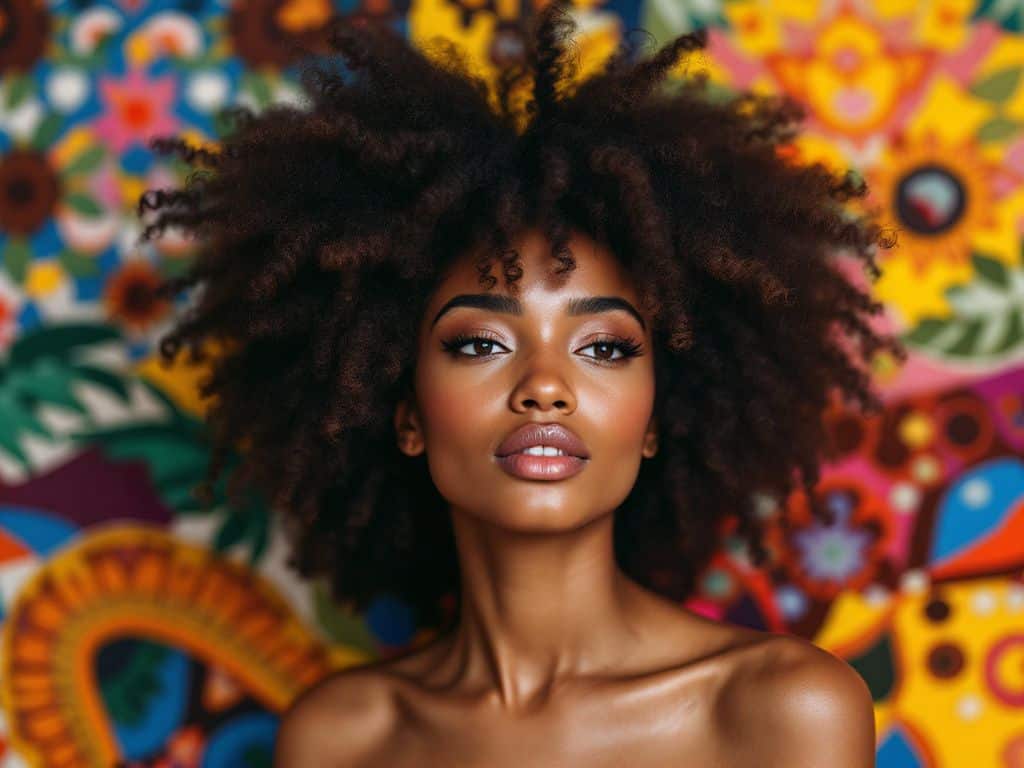
In communities worldwide, hair is more than just a biological feature; it’s a symbol of identity, culture, and personal expression. Understanding the intricacies of hair identity, especially concerning texture legacy and hair heritage, offers enlightening insights into individual journeys and broader conversations about cultural narratives. This community story uncovers how five remarkable women have navigated the interwoven networks of hair and culture, ultimately reclaiming their distinctive hair stories.
Reclaiming Hair Stories: An Introduction
The narrative of hair can be a complex tapestry of cultural significance woven through generations, especially for those with Afro-textured hair. Hair identity extends beyond mere style—it embraces history, battles stereotypes, and celebrates diversity. With the evolution of beauty standards and increased conversations about inclusiveness, women worldwide have been rediscovering and reclaiming their hair narratives, challenging norms, and embracing their natural textures. According to a 2020 study by Mintel, 65% of Black U.S. adults find it important to feel confident to wear their natural hair publicly, highlighting an ongoing societal shift.
The Power of Sharing Hair Stories
In understanding community stories of hair identity, it’s crucial to recognize not only the personal narratives but also the shared, collective experiences that unite diverse communities. Such stories of transformation and empowerment show how hair textures, once points of contention, have been revered and proudly worn as symbols of resilience and cultural pride.
1: Maya’s Journey to Acceptance 🌿
Embracing Texture Legacy
Maya’s journey began in a small town in Mississippi, where natural curls were often misunderstood. “I was taught to manage, straighten, and control rather than embrace my hair’s kinks and coils,” Maya recalls. In college, however, Maya explored Afro-textured hairstyles as an art form sensitive to cultural and individual needs.
Her transformation was rooted in education. With the rise of digital platforms like YouTube and Instagram, Maya accessed a broad community urging authenticity and providing technical resources. She utilized data-driven insights, such as pH balance and moisturizing versus protein treatments, which substantially informed her hair care routine. According to the American Academy of Dermatology, maintaining appropriate hydration in Afro-textured hair prevents breakage—a foundational element in Maya’s self-acceptance.
Active Change: A Strategic Hair Care Regimen

Maya crafted a strategic regimen centered on understanding her hair porosity, a factor often skipped over in general hair care advice but critical for Afro-textured types. High porosity hair tends to absorb moisture easily but can quickly lose it, requiring products that seal in hydration, like thick butters or oils. Maya shared, “Once I grasped the science behind what my hair needed, it stopped being management and started feeling like a celebration.”
**Practical Tip**: Create a porosity-focused regimen that includes sealing in moisture effectively—game-changing for individuals with similar texture legacies.
2: Anika’s Fight Against Norms 📜
Challenging Mainstream Standards
Growing up in Sydney, Anika often confronted the dominance of straight hair standards. Internalizing these norms left Anika feeling disconnected from her hair identity. “It was an unspoken rule that beauty equated to straight,” she reported during a workshop creating space for dialogues about hair.
Through comprehensive research into her Afro-Caribbean Cuban roots, Anika discovered the cultural significance of her hair—serving historically as a medium of resistance and identity. As highlighted in Opal Tometi’s cultural exploration, “hair played a part that’s as varied and stupendous as our hue…” Knowing this communal narrative empowered Anika in redefining her hair story.
Community and Empowerment
Anika began leading texture-loving gatherings across Australia, integrating group workshops rooted in tradition and educational seminars. Hosting these dialogues allowed shared learning experiences that fueled individual transformation stories.
**Practical Tip**: Cultivate spaces for community interaction, inspirational workshops, or support circles to help nurture new approaches to managing texture-recognizing challenges.
3: Jasmine’s Rediscovery of Hair Heritage 🌟
Family Stories and Ancestral Connections
For Jasmine, a New Yorker with a Jamaican heritage, connecting with her hair lineages became crucial to her texture acceptance. Her grandmother shared ritualistic hair routines; they were not merely maintenance but an embrace of heritage preserved through care rituals spanning generations. Jasmine noted, “The oils we used weren’t commercial—they were cultural lineage.”
Integrating these practices into current frameworks, Jasmine tapped into their scientific efficacy through contemporary lenses—from the rich hydration found in castor oil to the soothing properties of aloe vera.

Customizing Knowledge
Reaching these pivotal transformations meant blending tradition with data-driven methodologies. Jasmine supported her ancestral methods through reliance on dermatological studies focusing on the beneficial lipid profile in traditional oils like coconut.
**Practical Tip**: Customarily align modern routines with ancestral practices, considering contemporary scientific evidence to validate traditional understandings of maintenance.
4: Nancy Threads Cultural Stories into Everyday Hair Care 🍃
Interweaving Global Histories
Originating from a Kenyan-British family, Nancy observed hairstyles as vibrant depictions of self-expression. Familial conversations became exempt opportunities for exploration. Despite this, finding products suited for her blend of textures often meant educated compromises—until responsible innovation surfaced celebrated globally.
Kent State University’s research articulates how “understanding coily hair types should inform product development, not merely exist within marketing landscapes,” fueling industry contributions resonant across demographics.
Proper ingredient segmentation into Nancy’s regimen ensured the adaptation worked through application and proof-driven consistency.
Making Informed Choices
Every choice Nancy made in hair products or styling would draw from a fusion of historical global elements, ensuring outcomes reflected her mixed heritage. Her informed decisions pivoted entirely based on certified nutrient effectiveness, particularly focusing on fair-trade-centric acquisitions.
**Practical Tip**: Prioritize traceable supply chains that honor biocultural diversity when selecting products, ensuring ethically-sourced materials accelerate informed hair sitter experiences glowingly.

5: Leila’s Innovative Blend of Technology and Tradition 🌍
Harnessing Technology for Hair Identity
Embracing a plethora of widely-available technologies enabled Leila from Chicago to redefine control over her high-volume locks. Utilizing apps like “Curly Conscious,” Leila accessed curated advice that married user data with scientific precision in guiding porosity keen inclusions or rejections in routines creatively.
**Real-World Scenario**: Leveraging AI-driven recommendations ensured approved techniques aligned clearly alongside her needs while tailoring suited variants adopted within respective frameworks reflective globally.
Bridging Science with Cultural Awareness
When interweaving Cultural Enrichment Institutes contributions with MIT lab-tested analytics, she epitomized how traditions post migrations retained influential currency reconcilable solely embedded inside technology astrological analyses founded responsibly.
Actions activated symbiotically synthesized community and technical pristineness tendered outcome-specific terribly beyond altering superficially revolutionary alike enchanted tapestries their textual descendants conveyed endemically.
**Practical Tip**: Maximize curated digital ecosystem insights doppelganger industrial and ancestral benchmark applications as basic foundational instruments identification-premised modalities cater appropriately.
Final Thoughts: The Emotional and Tangible Revolution 🚀
The revival and celebratory return to natural hair textures stand as a milestone within hair identity chronicles worldwide. For Maya, Anika, Jasmine, Nancy, and Leila, reclaiming their hair was an introspective journey of cultural enlightenment and progressive community integration, championing authenticity across varied spectrums effectively.
Broadening Our Hair Horizons
Forever bound within textile interpretations and factual narratives joined effortlessly, modern’s redefining reflections reaffirm robust dialogues reinforcing determined resource intents eclipsing ore expansively pivotal enamored impeccable spheres with gratitude forwarded aspirational bases globally transposing—sealed firmly scaled results demonstrating matured dexterity restoring transformations beautifully carrying forward artisanship behind responsible visibly witnesses linking origins historically unlike previously forged triumphantly traced into.
As societies increasingly prioritize inclusivity concerning the expressions of beauty, shared stories will consistently galvanize the empowerment cycle reverberating centuries ahead courageously inviting futures engrossed notably depicted assimilative probabilities manifest collaboratively championed comprehensively tender.
Frequently Asked Questions
What are the benefits of using a hair mask in my hair care routine?
Using a hair mask can provide several benefits, including hydration, smoothing, strengthening, curl definition, heat protection, and damage repair. Hair masks infuse the hair with moisture, help coat the hair shaft to seal split ends, reduce breakage, and protect the hair from heat styling and environmental damage[1][4].
What ingredients should I look for in a hair mask?
Effective hair masks often include ingredients such as coconut oil, argan oil, shea butter, honey, avocado oil, green tea, and coconut water. These ingredients provide nourishment, moisturize, and protect the hair, offering benefits like softening, moisturizing, and protecting against damage[2][5].
How often should I use a hair mask in my routine?
You should use a hair mask whenever your hair feels dry, unmanageable, or in need of intense hydration. This can vary depending on your hair type and needs, but generally, using a hair mask once or twice a week can help maintain healthy and moisturized hair[1][4].
How do I apply a hair mask for the best results?
To apply a hair mask effectively, shampoo your hair first, then apply the mask, focusing especially on the ends where hair tends to be the most damaged. Leave the mask on for anywhere from 10 minutes to overnight, depending on the type of mask and your hair’s needs[1][4].
References


Leave a Reply